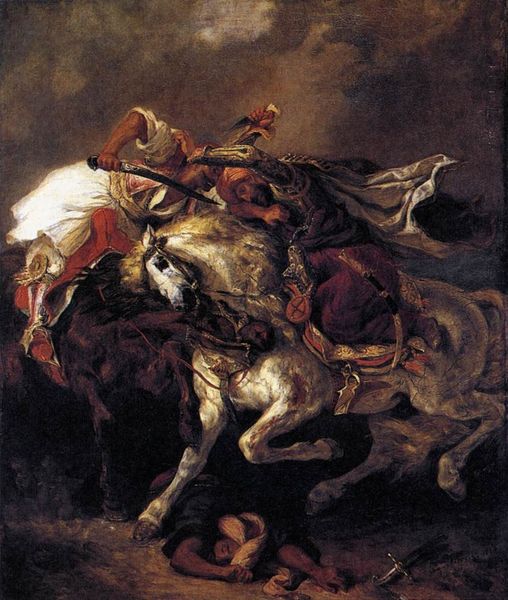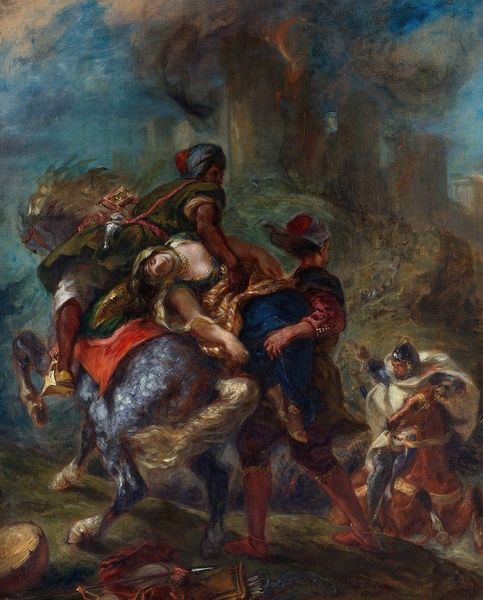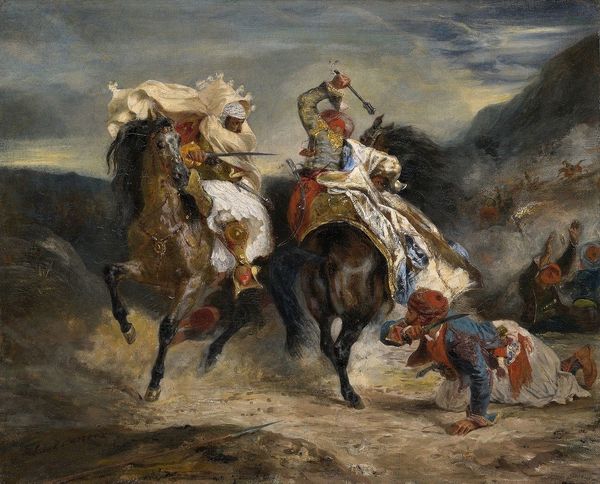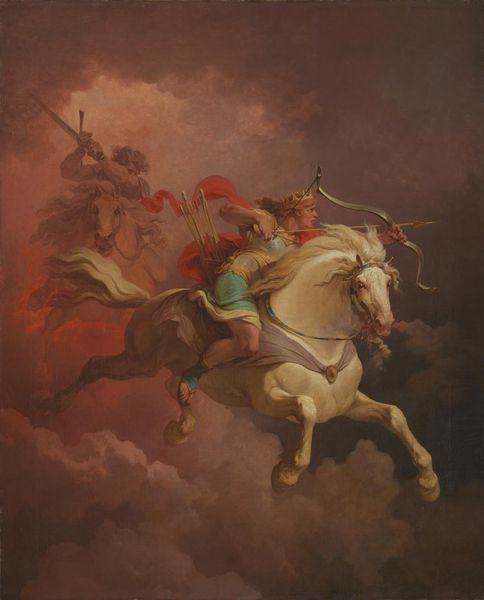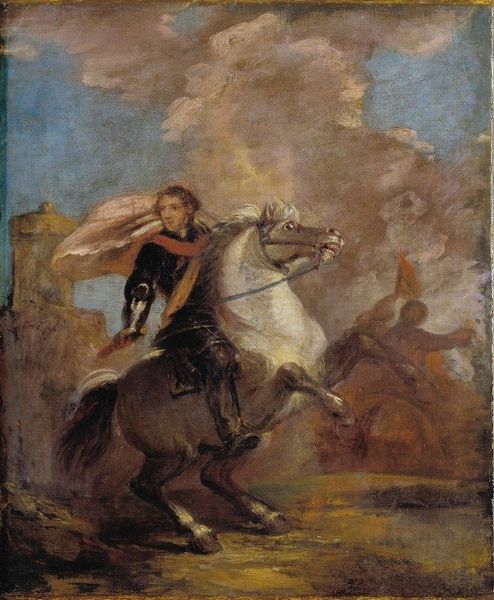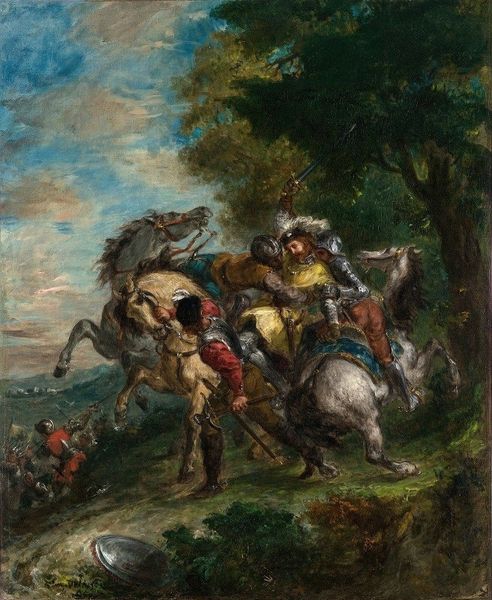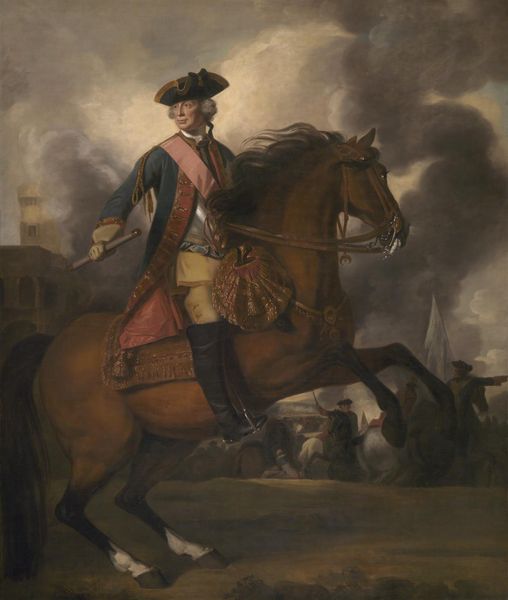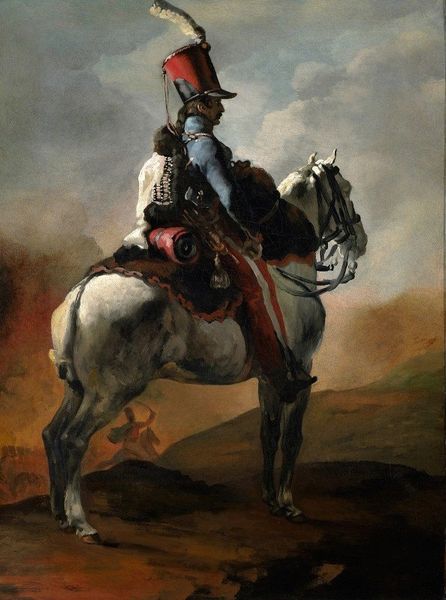
#
charcoal drawing
#
possibly oil pastel
#
oil painting
#
acrylic on canvas
#
underpainting
#
animal portrait
#
surrealism
#
mythology
#
painting painterly
#
animal drawing portrait
#
surrealist
Copyright: Public Domain: Artvee
Francois Gerard’s “Curtois” is made with oil paint, the medium of choice for academic artists of his time. The physical properties of oil paint allowed Gerard to achieve the appearance of depth, volume, and luminosity, highly prized during the Neoclassical era. Look closely and you’ll see the artist built up layers of color. This painstaking process, which involved grinding pigments and mixing them with oil, was labor-intensive, and the resulting artwork was prized as a demonstration of skill, erudition, and status. The painting’s dramatic flair and meticulous details celebrate the classical values favored by the elite. But don’t be fooled by the smooth surface and polished finish – oil paint can do more than just create illusions. In Gerard’s hands, it becomes a tool for reinforcing social hierarchies and celebrating the power of the ruling class. By understanding the materials and methods used to create "Curtois," we can see how art is intertwined with broader issues of labor, politics, and consumption, and move beyond conventional art history categories.
Comments
No comments
Be the first to comment and join the conversation on the ultimate creative platform.
